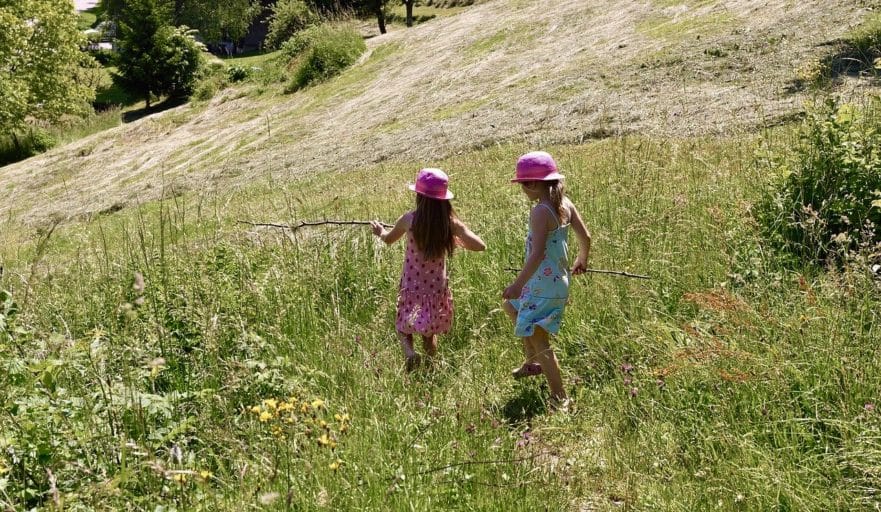Take advantage of the magic of nature—in your own backyard or on a walk.
THE HIKE

Written and illustrated by Allison Farrell
“Utterly satisfying” Kirkus

Three friends take a hike. Wren brings a sketchbook and a flag, El brings a poetry notebook, and Hattie brings feathers and holds Bean, the dog’s, leash. Hiking is their “favorite thing to do”—and no wonder. The three friends draw wildlife, spot deer tracks, and, in a magical moment, actually see a deer before it startles and disappears. The plants and animals of the Western woodland are labeled on the illustrations and the “characters’ sketches” are delightful.
******************
**************
A QUIET MEADOW ART PROJECT
Standing on the edge of a meadow or a forest, create a piece of art that reflects the beauty of our natural environment……..trees, grasses, leaves and flowers as well as the insects and birds. Try and depict the effect of the wind on the movement of the plants in your art.
Materials: paper, paint, card stock or stiff paper, scissors
1. Paint a soft green wash in the foreground and quiet blues for the sky.
2. Use painted edges of your card stock to print grasses and stems of plants. Vary the angles and heights of your grasses and bend your painted card to add curved lines to keep the feeling of soft grasses.

3. Draw birds and flowers. Cut them out and add them to complete your meadow.

I’d love to see photos of the meadows you create.
**************
AN IMPORTANT NEW STUDY ABOUT THE IMPORTANCE OF FREE PLAY IN NATURAL ENVIRONMENTS
“A new systematic review reports that unstructured free play in natural environments positively impacts children’s cognitive development, along with influencing outcomes related to physical activity, fitness levels, motor skills, social skills, emotional well-being and creativity. For this systematic review, the umbrella term “nature play” was used to describe “unstructured, free play within nature (forest, green spaces, outdoors, gardens) and included natural elements (highly vegetated, rocks, mud, sand, gardens, forests, and ponds or water.”
Authors – Kylie A. Dankiw, Magarita D. Tsiros, Katherine L. Baldock, Saravana Kumar
Published February 2020


